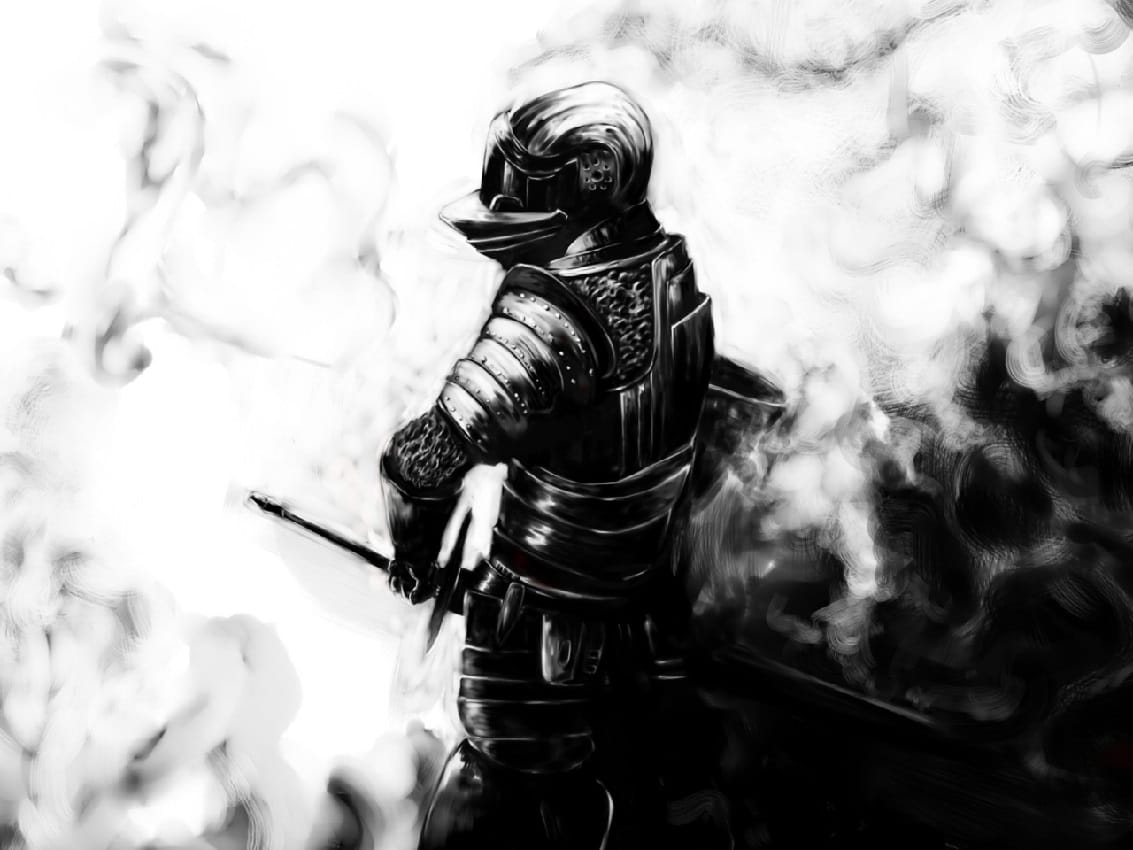
The Knight, Death, and the Devil essay
A central place in rich graphic Albrecht Durer’s legacy rightfully belongs to three copper engravings that entered into the history of art as Meisterstiche (in other words ‘master engravings’). They are the Knight, Death, and the Devil (1513), Saint Jerome in his Study (1514) and Melancholia I (1514), which has been the subject of comprehensive analysis and interpretation for a long time. In these small works (the format of each is approximately equal to a standard sheet of typing paper) the skill of Durer as engraver reached unprecedented perfection. Describing graphic works we see that different instruments and copper get under his hands the sensitivity of fine musical instrument; shading is virtuous: examining the engraving, the viewer forgets that the sinister gloom of forests, streams of sunlight and the light of falling stars – everything of these were reproduced using black ink and white paper. Thus, this essay will consist of an in depth analysis of Albrecht Durers’ Knight, Death, and the Devil.
First of all it is necessary to mention that engraving the Knight, Death and the Devil (it is also called the Rider) was created in a period of the Northern Renaissance. Specific style of artwork in that period was characterized by the influence of religion, being more concrete we can say that this style was influenced exactly by the Protestant Reformation. Hutchison stated that “the Protestant Reformation was a rebellion against the practices of the Catholic church started by a German man named Martin Luther. Luther’s intent was to reform the Catholic church back to more Christian-like practices, which eventually resulted in the start of the Protestant religion.” (Hutchison, 2000). In such a way Durer’s engraving (the Knight, Death and the Devil) as a kind of early artwork of the Northern Renaissance combined in itself some features of High Renaissance, and was full of religious context and meaning. Basis for its subject was drawn from the life and was full of allegories; so, Bartrum explained that “it represents an allegory on Christian salvation. Unflustered either by Death who is standing in front of him with his hour-glass, or by the Devil behind him, an armored knight is riding along a narrow defile, accompanied by his loyal hound. This represents the steady route of the faithful, through all of life’s injustice, to God who is symbolized by the castle in the background. The dog symbolizes faith, and the lizard religious zeal. The horse and rider, like other preliminary studies made by Dürer, are derived from the canon of proportions drawn up by Leonardo da Vinci” (Bartrum, 2002).
Describing this engraving we see that it is unreal and even fantastic; moreover, Durer combines the fantastic with a convincing truthfulness details (it is possible to mention that such approach to art was typical to him before, but here it reached its perfection). For example, historian who is interested in weapons can refer to the engraving Knight, Death and the Devil as to the exact document, because depicted armor weapons were produced in the beginning of XV and XVI century in weapon workshops of Nuremberg and Augsburg. According to Durer’s engraving we can learn how the pieces of this armor and hinges of steel gauntlets were connected. Durer loved the weapons and armor, so we have no doubts in authenticity of all details depicted on the engraving. However, such historical realism of all parts asks riddles for contemporary viewers. The knight was worn in corrugated armor that has become obsolete as a fighting outfit in the beginning of the XVI century because it was very heavy, expensive, and useless in contact with firearms (Strauss, 1973). Similar armor became ceremonial attire of generals and princes, or suit of ceremonial armor at the time of Durer, but the engraving shows us the knight in expensive princely armor with a fighting sword without any decoration and with a simple hilt. It allows to suppose that weapons and armor of this hero are not a sign of a class: they are the symbol of firmness, courage and fearlessness.
Thinking about the engraving’s symbolism we see that the Death offered hourglass to the rider that is the symbol of brevity of human life. The Death is not a skeleton, but the flesh; it has only a half of its face and we see that another half has rotten and visible failures of the eye sockets and nose look very horribly. Moreover a head of the Death is crowned with unreal crown. However, the rider doesn’t grant the Death even a stare. The rider has passed the Devil with the muzzle of boar, ram horns, bat wings and goes ahead without looking back. It seems that his horse walks slowly, but a dog who does not want to keep up with the owner, has to run. The pace of the horse and rider’s movements are irresistible. It is obvious that neither death nor the devil can scare and stop him.
Combining this work of art with the work’s relationship to the worldview at the time it was created it is necessary to say that some researchers stated that Albrecht Durer have created his depiction of the Christian Knight in his engraving the Knight, Death and the Devil under the influence of Erasmus of Rotterdam, who has published in 1504 Instructions for the Christian Soldier (Enchiridion militis Christiani) (Panofsky, 1945). Nowadays it is hard to say who first linked this engraving with the work of Erasmus of Rotterdam, but basing on this assumption we see many similar details, because the ‘instructions’ state that a person should stay at the path of truth, whatever ghosts appear in front of him. It has famed loyalty to the spiritual duty and embodies the state of moral virtue.
Thus, basing on the above presented analysis it is possible to say that Durer’s Engraving the Knight, Death and the Devil occupies its deserving place in the history of art. It is impossible to overestimate its place in the wide Durer’s legacy, because his knight is a Christian, obstinately following a celestial city (represented in the image of the castle, crowning a rock in the background), despite the temptations of the devil, and relentlessly proximity of death hour. In conclusion, on the one hand, the Knight, Death and the Devil has reflected the development of social thought in those times Germany, and on the other hand, it has depicted Durer’s spiritual closeness to the great humanists of his time.

